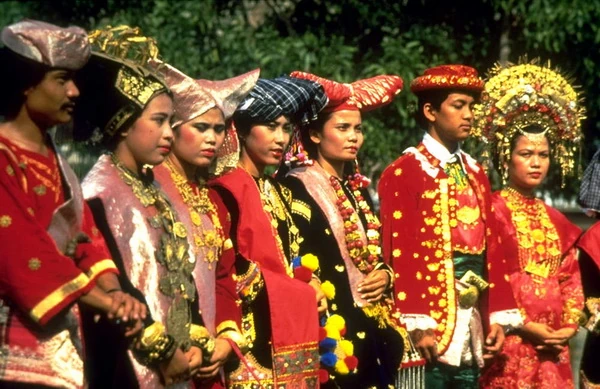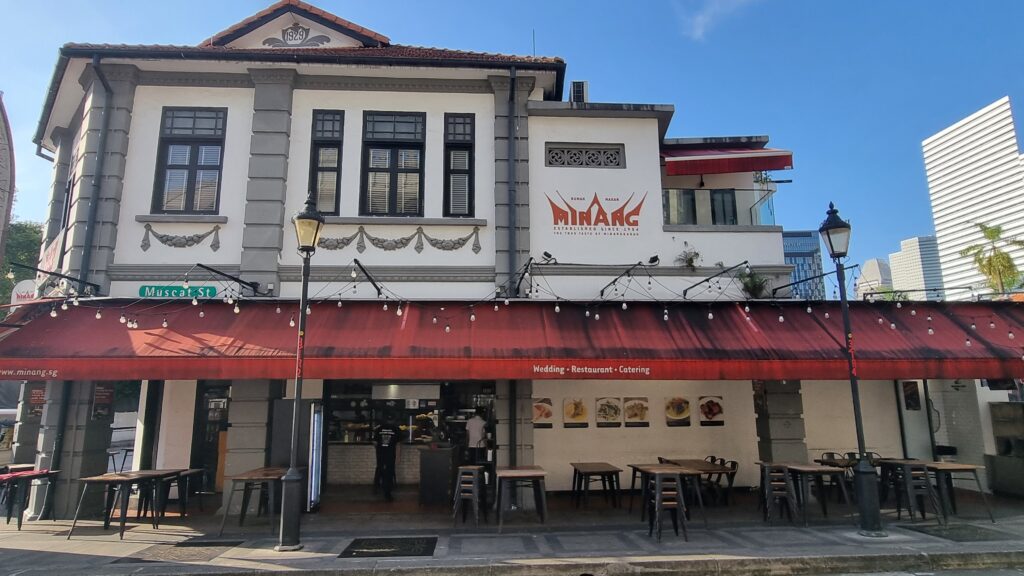At the corner of Kandahar Street, adjacent to Muscat Street, stands a restaurant with a prominent signboard reading “MINANG,” with the font styled after the distinctive buffalo-horn-shaped roofs of the Minangkabau architecture. Above it, a smaller sign indicates the full name: Rumah Makan Minang. This beloved eatery is a go-to destination for authentic Minangkabau cuisine, referred to as Nasi Padang, and it boasts a history of over 70 years at its current location. Nearby, a close competitor, Warong Nasi Pariaman—with a slightly longer history—also attracts patrons. However, Rumah Makan Minang captures attention with its eye-catching signboard and reputation.
The Minangkabau are an indigenous ethnic group from West Sumatra, with Padang as their cultural and administrative center. They are known for their matrilineal society, elaborate clothing, and unique cultural traditions. They are also known for their merantau culture, referring to the tradition of young men leaving their homeland to seek knowledge, experience, and opportunity elsewhere. It’s more than just migration; it’s a rite of passage, a journey of self-discovery and personal growth, with the expectation of returning to share their newfound wisdom and contribute to their community. Many have settled in other parts of Indonesia, making them one of the country’s largest ethnic groups. It is often said that if they do not succeed outside their homeland, they simply do not return.
The name “Minangkabau” originates from a legend explaining the two words: “Minang” meaning “victory” or “win,” and “kabau” meaning “buffalo.” The Malay version—”Menang” and “Kerbau”—is easier to understand. According to the legend, a territorial dispute arose between the Minangkabau and a prince, likely Javanese. To avoid a destructive battle, the local community proposed settling the dispute through a fight between two water buffaloes. The prince agreed and chose the largest, most aggressive bull, while the Minangkabau selected a hungry baby buffalo with horns ground into sharp knives.
At the fight pit, the baby calf, seeing the larger bull, instinctively sought milk, approaching the bull to nuzzle its udder. The bull, dismissing the small creature as insignificant, didn’t notice the baby’s sharpened horns. When the baby calf moved under the bull’s belly, its horns ripped into the larger animal, killing it. The Minangkabau thus emerged victorious, and the dispute was settled. This legend is reflected in their architecture—most notably, the upward-curving buffalo horn shape that is reflected in traditional buildings and women’s clothing, especially their head-dress.
Another distinctive aspect of the Minangkabau is their status as one of the few remaining matrilineal societies in the world. Lineage and inheritance are traced through women, who inherit property and hold significant influence in family and community decision-making. However, as times are a-change, these traditions are evolving with time.


